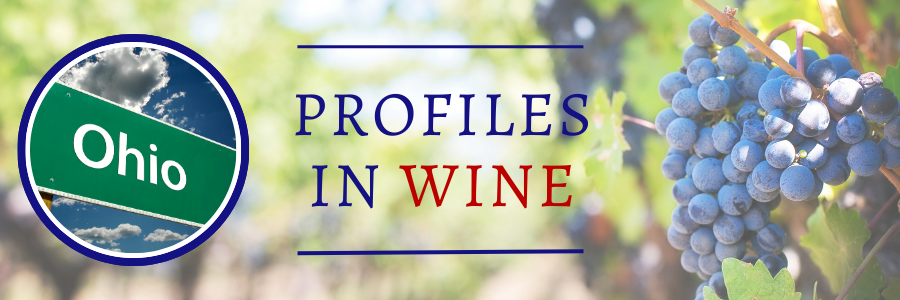In 1860, Ohio was the nation’s largest wine producer thanks largely to the Catawba grape introduced by Nicolas Longworth in 1825, two years after he planted the Alexander and Isabella varieties. As in all other states, the Ohio wine industry was wiped out by Prohibition, but eventually bounced back to its current status as one of the largest and most vibrant in the country.
Lake Erie’s south shore, which is Ohio’s northern border, is in the “Pinot Belt” on a similar latitude to Burgundy and Oregon’s Willamette Valley, and the southernmost Great Lake provides climatic benefits for viticulture in the region. While Ohio’s early viticulture was based exclusively on vitis labrusca varieties, today a wide range of grapes is grown, including French, Cornell, and Minnesota creations along with classic vinifera. Different growing conditions are reflected in the state’s five AVAs: Grand River Valley, Isle St. George, Lake Erie, Loramie Creek, and Ohio River Valley.
Marketing is a strong suit in the Buckeye State, thanks largely to the creativity, dynamism, and boundless energy of Donniella (Donnie) Winchell, Executive Director of the Ohio Wine Producers Association (OHPA). For more than four decades, often with just a shoestring budget, she has organized great wine festivals, supported the creation of seven wine trails, created educational materials, attracted collaborating organizations, and participated in various groups including WineAmerica’s State and Regional Associations Advisory Council (SRAAC). Fortunately she has also shared her inspirations with the broader American wine community through a playful but useful “Tuesday Tidbits” e-newsletter of marketing suggestions and the hugely popular License to Steal national wine marketing conference. For her decades of ongoing efforts, she was recognized in the Ohio Wine Hall of Fame, and with the Rich Smith Award of Excellence for “passion, commitment, collaboration.”
Ohio also has many noteworthy wineries for different reasons. Chalet Debonne owner Tony Debevc was one of WineAmerica’s earliest leaders, and the winery remains a flagship as the largest estate winery in Ohio with 175 acres.
Breitenbach Winery’s name means “bright or broad stream”, reflecting the water flowing through the property, which is in the rural Amish countryside. The 150,000-gallon winery produces more than 40 varieties of fruit and grape wine, and includes a cafe, gift shop, guest house, and wedding venue.
Ferrante Winery & Ristorante is a true family operation, begun in 1937, with brothers Anthony (vineyardist) and Nick (winemaker) handling the wine side while sisters Carmel and Mary Jo work with other staff to make the ristorante a true destination for lunch, dinner, and special events. Among recent dinner options were Lamb Lollipops, Blackened Mahi Mahi, Ravioli Truffle Cream, and a Dark Chocolate Espresso Brownie to top it all off. Ferrante wines are also frequent winners in major competitions like the massive San Francisco Chronicle where the Ferrante Vidal Ice Wine won Best of Show in the Dessert Wine category.
Vermilion Valley Vineyards offers only wines that are 100% state grown while also emphasizing sustainability and philanthropy as key parts of its business model. In addition to the viticultural sustainability practices, their building reflects the same philosophy and implementation through it architecture, geothermal heating and cooling, insulation, and locally sourced building materials.
Great Grapes: Catawba
A serendipitous cross between a vitis labrusca variety and the vinifera Semillon, the red-skinned Catawba grape originated in North Carolina’s Piedmont region and was named for the Catawba river. Its versatility—for table wine, sparkling wine, grape juice, jams and jellies—made it very popular in the eastern United States early on. The naturally high acid is ideal for sparkling wines, which won international acclaim in the 1880s, as well as a suitable blender for other red varieties.


